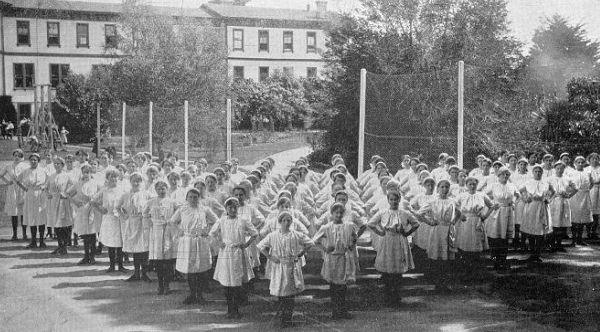 Higher Education Reform
Higher Education Reform University Coeducation Is Not a Triumph for Feminism

Physical education class at New Zealand’s Nelson College for Girls, circa 1913.
Beginning in 1969, and mostly ending in 1974, there was a flood of decisions in favor of coeducation in the United States and the United Kingdom. Harvard, Yale and Princeton in the US; Churchill, Clare and King’s at Cambridge; Brasenose, Hertford, Jesus, St Catherine’s and Wadham at Oxford – many of the most traditional, elite and prestigious men’s colleges and universities suddenly welcomed women to their undergraduate student bodies.

This article by Nancy Weiss Malkiel was originally published at Aeon and has been republished under Creative Commons.
For one thing, coeducation was not on the feminist agenda in the 1960s and ’70s. The emerging women’s movement had other priorities. Some of these had to do with the rights and privileges of women in the public sphere: equal access to jobs; equal pay for equal work; legal prohibitions against discrimination on the basis of sex – the agenda, for example, of Betty Friedan and other founders of the National Organization for Women in 1966. Other priorities concerned the status of women in the private realm, striking at societal expectations about sex roles and conventional relationships between women and men. One of the movement’s earliest proponents, Gloria Steinem, spoke out about such feminist issues as abortion and the Equal Rights Amendment; and in 1971, upon commencement at her alma mater, Smith College, she said that Smith needed to remain a college for women. Steinem argued that remaining single-sex was a feminist act. Like Wellesley College, Smith was at the time considering a high-level report recommending coeducation. And like Wellesley, Smith – influenced in part by Steinem and the women’s movement – backed away from taking such a step.
Just as the drive for coeducation had nothing to do with the triumph of feminism, so it had little to do with a high-minded commitment to opening opportunities to women. The men who brought coeducation to previously all-male institutions were acting not on any moral imperative, but were acting in their own institutional self-interest. Particularly in the US, elite institutions embarked on coeducation to shore up their applicant pools at a time when male students were making it plain that they wanted to go to school with women. Presidents such as Kingman Brewster Jr of Yale (1963-77) and Robert F Goheen of Princeton (1957-72) were forthright about their overriding interest: to enroll women students in order to recapture their hold on ‘the best boys.’
That the educational needs and interests of women were not uppermost on these men’s minds doubtless bears on the ways in which coeducation fell short of contributing to real equality between the sexes. That was true in the universities, where coeducation did not mean revolution. Contemporaries called the pioneering women students ‘honorary men’; they were included and assimilated, but they were expected to accept or embrace longstanding institutional traditions, not to upend them.
Nor did coeducation lead to a leveling of the playing field for men and women, during their college years or beyond. Coeducation did not resolve the perplexingly gendered behaviors and aspirations of female students. While women present credentials on entrance that match or exceed those of men, they still tend to shy away from studies in fields such as mathematics, physics, computer science and economics, where men dominate. Moreover, even in fields where women are well-represented, men, rather than women, achieve at the highest academic levels.
Women also make gendered choices about extracurricular pursuits: they typically undersell themselves, choosing to focus on the arts and community service, while declining to put themselves forward for major leadership positions in mainstream campus activities.
Just as importantly, sexual harassment and sexual assault are no more under control after more than four decades of coeducation than they were when men and women first started going to college together.
And women continue to face significant challenges in finding professional leadership opportunities and realizing professional advancement. The handful of women CEOs in major corporations continue to be the exception, not the rule. Despite the fact that a second woman has now become prime minister of the UK and that a woman has for the first time won a major party nomination for president of the US, women are significantly underrepresented in the U.S. Senate, the U.S. House of Representatives, and the British Parliament. There continues to be a significant gender gap in salaries, from entry-level jobs to much higher-level positions. Achieving a manageable work-family balance is a persistent problem for women, with even the most highly educated female professionals facing pressure to step out of the labor force to raise children.
In short, coeducation has fallen well short of righting the fundamental gender-driven challenges that still bedevil our society. It has not succeeded (perhaps it could not have been expected to succeed) in accomplishing real equality for young women in colleges and universities, or in the worlds of work and family that follow.![]()
































































































